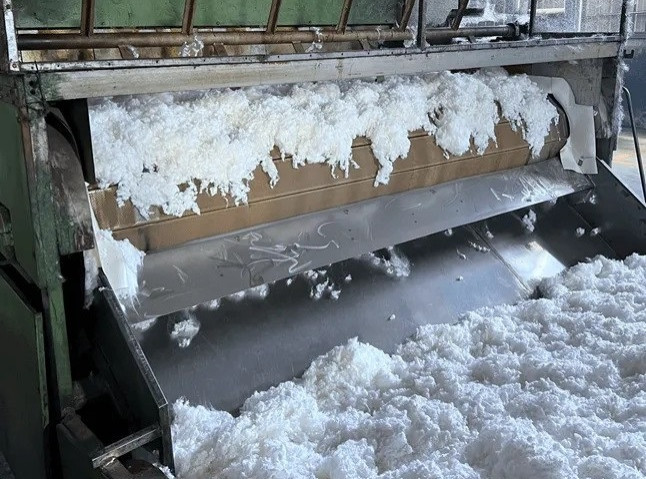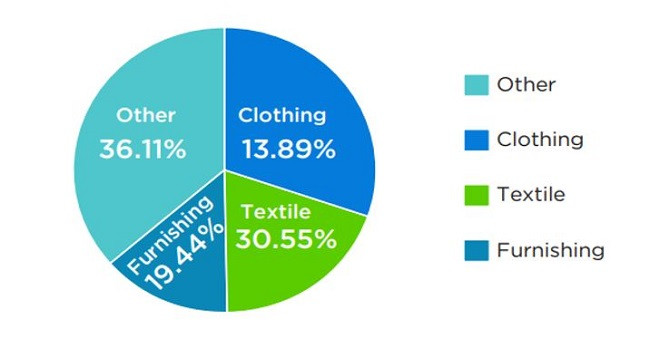As Bangladesh strives to maintain its foothold in the global textile industry, it becomes crucial to shift focus towards value added products, particularly man-made fibers. With the fashion landscape evolving rapidly, man made fibers emerge as the future of the industry, Given Bangladesh’s heavy reliance on cotton, now is the opportune moment to transition towards man-made fibers, particularly polyester.

Amidst the backdrop of escalating labor, gas and electricity costs, which have surged by 156% reaching Tk 30.75, the need for strategic shifts towards value added products becomes even more pronounced. To remain competitive in the global textile market and achieve its ambitious target of $100 billion by 2023, Bangladesh must embrace polyester as a potential game-changer.
Global market analysis for Polyester
Polyester dominates global textiles, constituting 54% of total fiber production, reaching 60.5 million tonnes in 2021. The polyester fiber market was worth over USD 90 billion in 2020 and is expected to grow at a CAGR of 7.8% from 2021 to 2027. Growth is fueled by textile industry demand, fashion sector expansion, and consumer preference for blended polyester. In 2023, polyester market share by application was: Furnishing (30.55%), Textile (19.44%), Clothing (13.89%), Other (36.11%).
Bangladesh current situation
Bangladesh’s textile and apparel industry primarily relies on cotton, with only 26% of products being man-made fiber (MMF)-based, in contrast to the global trend where 78% of items are MMF-based. Despite this, Bangladesh has emerged as a significant player in ready-made clothing, with over 4600 factories and 430 spinning mills, albeit with only a fraction producing synthetic fibers like polyester.
In recent years, Bangladesh has imported significant amounts of Polyester Staple Fiber (PSF), mainly from China, India, and South Korea. The Bangladesh Garment Manufacturers and Exporters Association (BGMEA) aims to increase MMF-based apparel exports from 26% to 40% by 2030, reflecting the growing global demand for polyester-based clothing.

With polyester derivatives constituting 74% of global apparel sales, there’s a lucrative opportunity for Bangladesh to tap into the $750 billion worldwide market by focusing more on polyester-based garments. Research suggests that if Bangladesh can increase its MMF-based garment shipments alongside cotton-based products, it could potentially earn $95 billion from ready-made garment exports by 2030.
Challenges to manufacture 100% polyester
Bangladesh textile industries already processing polyester derivatives (CVC/PC). Bangladesh dye houses have sufficient technologies to handle polyester. Dye houses employ MCS, Athena 3A, multi-flow machines, Fong’s, etc. to dye polyester & its derivatives.
But Bangladesh are not capable of manufacturing 100% polyester because of some challenges. The challenges are:
- Raw Material Availability: Polyester yarn production heavily relies on the availability and cost of raw materials. Fluctuating prices and supply chain disruptions pose challenges for manufacturers.
- Cost Competitiveness: With increasing global competition, polyester yarn manufacturers in Bangladesh face the challenge of maintaining fabric manufacturers cost competitiveness. Factors like energy costs, labor wages can impact the overall cost structure.
- Expertise: Bangladesh has less experts to manufacture polyester.
- Skilled man power: As Bangladesh polyester plants are limited there are limited skilled worker.
- Technology : for knitting & spinning 100% polyester, there are limited technology available in Bangladesh.
- Investment : It is very costly to go for 100% polyester plant. As Bangladesh doesn’t have sufficient technology and expertise.
It’s critical to concentrate on polyester in RMG to provide value-added products. But by overcoming those challenges by strategic planning, technological advancements, and sustainable manufacturing practices Bangladesh textile sector can switch toward polyester and go for value-added products.
















